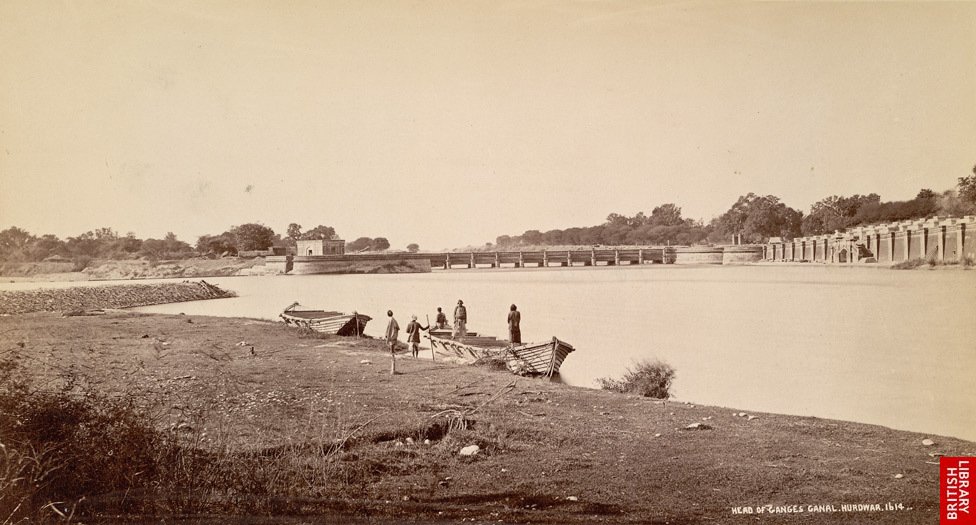
Visiting Bhimgoda Barrage: Hours, Tickets, and Travel Tips
Date: 31/07/2024
Introduction
Bhimgoda Barrage, located in the holy city of Haridwar, Uttarakhand, India, is an engineering marvel and a site of immense historical, cultural, and environmental significance. This comprehensive guide aims to provide visitors with detailed information about Bhimgoda Barrage, covering its historical background, construction, significance in irrigation and flood control, cultural importance, and practical travel tips. Known for its pivotal role in regulating the flow of the Ganges River, Bhimgoda Barrage is a vital component of the Upper Ganges Canal system, which extends over 1,000 kilometers and irrigates vast tracts of agricultural land in Uttarakhand and Uttar Pradesh (Wikipedia).
The barrage is named after Bhima, one of the legendary Pandava brothers from the Indian epic Mahabharata. According to legend, Bhima created a water tank, or ‘goda,’ by striking the ground with his knee, hence the name Bhimgoda (Firstrek). The modern barrage was constructed during the British colonial period as part of the Upper Ganges Canal project, completed in 1854. This monumental engineering feat has since played a crucial role in the region’s agricultural and economic development.
Haridwar, one of the seven holiest places in Hinduism, attracts millions of pilgrims annually who come to take a holy dip in the Ganges. The barrage’s proximity to significant religious sites like Har Ki Pauri underscores its importance as both an engineering structure and a part of Haridwar’s spiritual fabric. This guide will help you make the most of your visit, whether you are a history buff, a spiritual seeker, or an adventure enthusiast.
Table of Contents
- Introduction
- Historical Background
- Construction and Development
- Significance in Irrigation and Water Management
- Role in Flood Control
- Cultural and Religious Importance
- Visitor Tips
- Practical Information
- Special Events and Guided Tours
- Photographic Spots
- Environmental Impact and Conservation Efforts
- FAQs
- Conclusion
- Call to Action
Complete Guide to Visiting Bhimgoda Barrage: History, Significance, and Travel Tips
Introduction
Bhimgoda Barrage, located in Haridwar, India, is not just an engineering marvel but also a site of immense historical and cultural significance. This guide covers everything you need to know about visiting Bhimgoda Barrage, including its history, significance in irrigation and flood control, cultural importance, visitor tips, and more. Whether you’re a history buff, a spiritual seeker, or an adventure enthusiast, this guide will help you make the most of your visit.
Historical Background
Bhimgoda Barrage is named after Bhima, one of the Pandava brothers from the Indian epic Mahabharata. According to legend, Bhima created a water tank, or “goda,” by striking the ground with his knee, hence the name Bhimgoda. This site has been a significant part of Haridwar’s spiritual and cultural landscape for centuries (Firstrek).
Construction and Development
The modern Bhimgoda Barrage was constructed as part of the Upper Ganges Canal project during the British colonial period. Initiated in the mid-19th century, the canal project aimed to provide a reliable source of water for irrigation and to facilitate trade and transportation. Completed in 1854, the barrage was a monumental engineering feat and has since played a crucial role in the region’s agricultural and economic development (Wikipedia).
Significance in Irrigation and Water Management
Bhimgoda Barrage is a key component of the Upper Ganges Canal system, which extends over 1,000 kilometers and irrigates vast tracts of agricultural land in Uttarakhand and Uttar Pradesh. The barrage regulates the flow of the Ganges River, ensuring a steady supply of water for irrigation, especially during the dry season. This has significantly boosted agricultural productivity, transforming the region into one of India’s most fertile areas (Wikipedia).
Role in Flood Control
In addition to its irrigation benefits, Bhimgoda Barrage plays a vital role in flood control. By regulating the flow of the Ganges, the barrage mitigates the impact of seasonal floods, protecting both agricultural lands and human settlements. This function is particularly important given the Ganges’ propensity for flooding during the monsoon season (Firstrek).
Cultural and Religious Importance
Haridwar is one of the seven holiest places in Hinduism, and Bhimgoda Barrage holds a special place in the city’s religious landscape. Located near Har Ki Pauri, one of the most revered ghats in Haridwar, the barrage attracts millions of pilgrims who gather to take a holy dip in the Ganges. Its proximity to such a significant religious site underscores its importance not just as an engineering structure but also as a part of Haridwar’s spiritual fabric (Travalour).
Visitor Tips
Best Time to Visit
The best time to visit Bhimgoda Barrage is from October to March when the weather is pleasant, making it ideal for sightseeing and exploring the surrounding areas. The monsoon season (July to September) should be avoided due to the risk of flooding and heavy rains.
How to Reach
Bhimgoda Barrage is easily accessible from Haridwar city center, approximately 2 kilometers from Har Ki Pauri. It can be reached by auto-rickshaw, taxi, or even on foot for those who enjoy walking. The nearest railway station is Haridwar Junction, well-connected to major cities across India.
Nearby Attractions
Visitors to Bhimgoda Barrage can also explore several nearby attractions:
- Har Ki Pauri: A sacred ghat on the banks of the Ganges, known for its evening Ganga Aarti ceremony.
- Mansa Devi Temple: Located on the Bilwa Parvat hill, this temple is dedicated to Goddess Mansa Devi and offers panoramic views of Haridwar.
- Chandi Devi Temple: Another important temple situated on the Neel Parvat hill, dedicated to Goddess Chandi Devi.
- Rajaji National Park: A wildlife sanctuary located about 10 kilometers from Haridwar, offering opportunities for wildlife safaris and nature walks.
Practical Information
Bhimgoda Barrage Visiting Hours and Tickets
There is no entry fee to visit Bhimgoda Barrage. The site is open to visitors throughout the day, but it is advisable to visit during daylight hours for safety reasons.
Safety Precautions
Visitors should exercise caution while exploring the barrage, especially near the water. It is important to follow any posted safety guidelines and avoid venturing into restricted areas. During the monsoon season, water levels can rise rapidly, so stay informed about weather conditions and heed any warnings from local authorities.
Special Events and Guided Tours
While there are no specific events tied to Bhimgoda Barrage, visitors can participate in guided tours that offer insights into its historical and engineering significance. These tours often include visits to nearby religious sites and provide a comprehensive understanding of Haridwar’s cultural heritage (Travalour).
Photographic Spots
Bhimgoda Barrage offers several picturesque spots ideal for photography. The area around the barrage provides stunning views of the Ganges and the surrounding landscape, making it a perfect location for capturing memorable moments.
Environmental Impact and Conservation Efforts
The Bhimgoda Barrage has had both positive and negative environmental impacts. While it has facilitated irrigation and flood control, it has also altered the natural flow of the Ganges, affecting aquatic ecosystems and sediment transport. Recent efforts, such as the Ganga Action Plan, aim to reduce pollution in the river and restore its ecological health. Ongoing discussions about more sustainable water management practices are also in place to ensure the long-term viability of the Ganges and its surrounding ecosystems (Wikipedia).
FAQs
Q: What are the Bhimgoda Barrage visiting hours? A: Bhimgoda Barrage is open to visitors throughout the day. It is advisable to visit during daylight hours for safety reasons.
Q: Is there an entry fee for Bhimgoda Barrage? A: No, there is no entry fee to visit Bhimgoda Barrage.
Q: How can I reach Bhimgoda Barrage? A: The barrage is located approximately 2 kilometers from Har Ki Pauri and can be reached by auto-rickshaw, taxi, or on foot. The nearest railway station is Haridwar Junction.
Q: What is the best time to visit Bhimgoda Barrage? A: The best time to visit is from October to March when the weather is pleasant.
Conclusion
Bhimgoda Barrage is a remarkable example of engineering and historical significance, playing a crucial role in irrigation, flood control, and the cultural landscape of Haridwar. Visitors can appreciate its technical achievements and immerse themselves in the rich spiritual and cultural heritage of the region. By following the practical tips and safety precautions outlined above, tourists can ensure a memorable and enriching experience at this iconic site.
Call to Action
For more travel guides and updates, download our mobile app Audiala, check out other related posts, and follow us on social media. Happy exploring!


